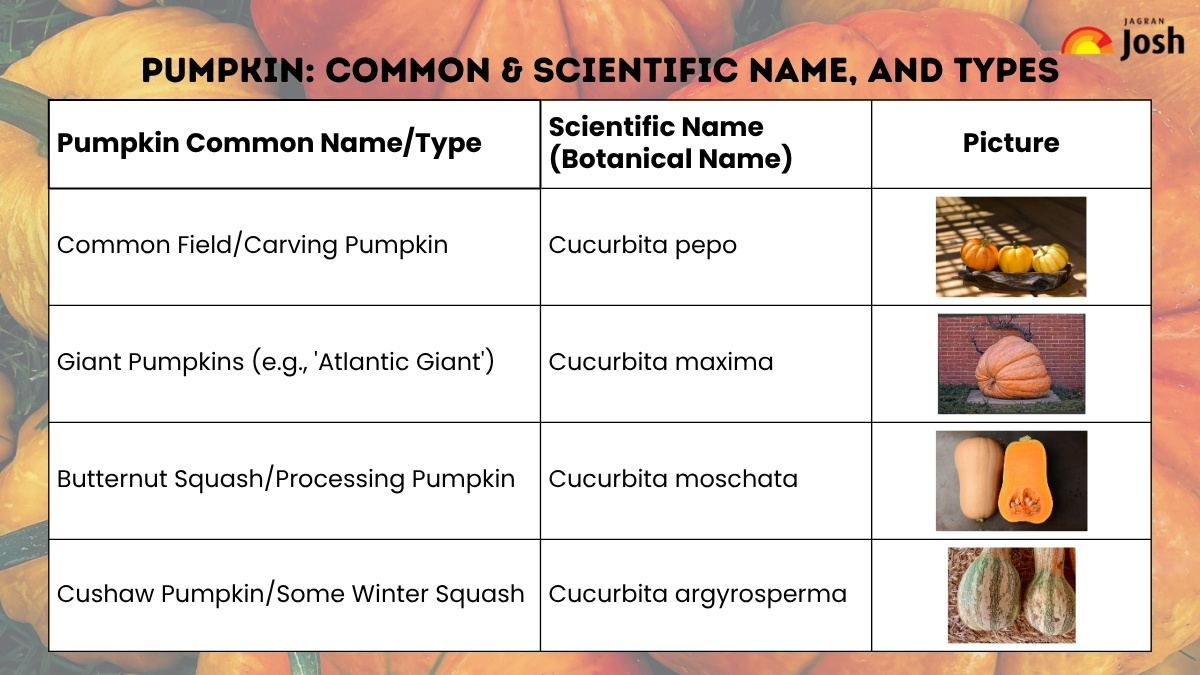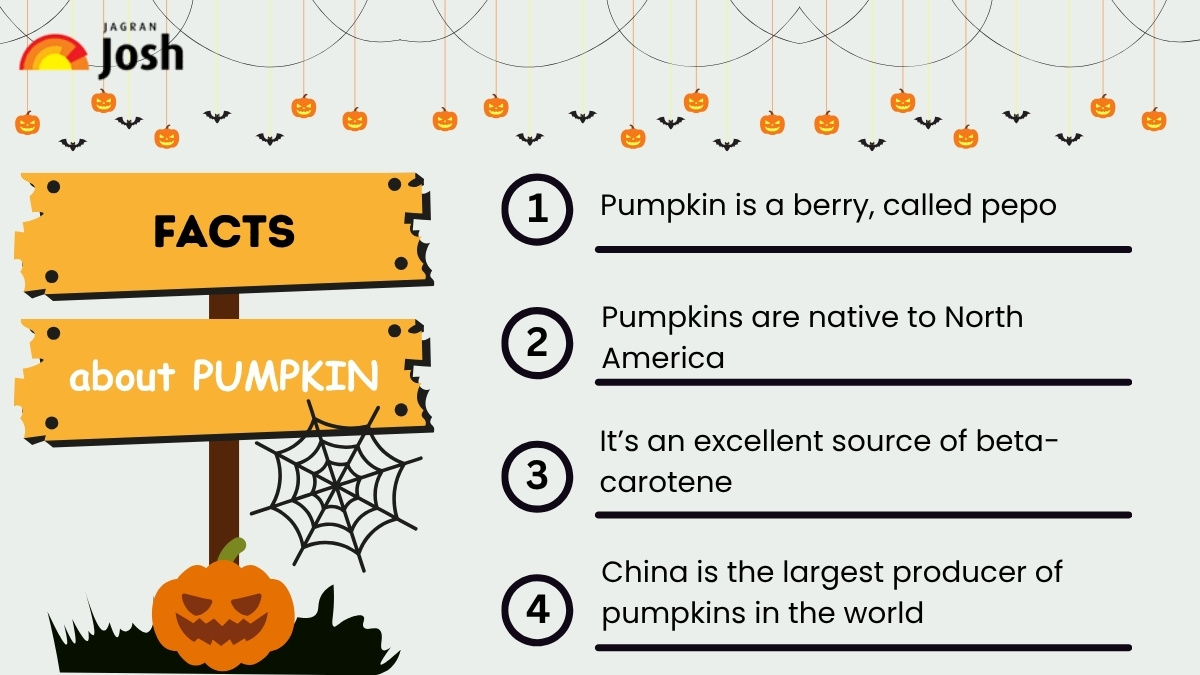Pumpkins are favorites for being used in fall decorations, Halloween jack-o'-lanterns, and the famous Thanksgiving pie. But underneath their happy, often bumpy outside is a complex botanical identity. What the scientific name for pumpkin is and why they are sometimes called a cucurbit, is a mystery for not just you, but many! Botanically, pumpkins are a type of berry called a pepo because they grow from the flower and have seeds. In the kitchen, we often think of them as vegetables.
The pumpkin's global presence is significant. The USDA says that U.S. farmers harvested more than 68,000 acres and grew about 1.4 billion pounds of pumpkins in 2024. This production was worth an estimated $274 million. Illinoisis the dominant state, particularly for processed varieties, with 90% of its massive crop going toward canned products. This popular crop's rich history, nutritional value, and agricultural importance all tie back to its formal botanical name and its place in the extensive Cucurbitaceae family.
What is the Scientific Name for a Pumpkin?
The botanical name for pumpkin is not just one word. The word "pumpkin" is used for many different cultivated species in the genus Cucurbita. The most common Latin name for the common field or carving pumpkin, on the other hand, is Cucurbita pepo.
The scientific classification follows a hierarchical system, from the largest category to the most specific:
-
Kingdom: Plantae (Plants)
-
Order: Cucurbitales
-
Family: Cucurbitaceae (The Gourd Family, often called the cucurbits family)
-
Genus: Cucurbita
-
Species: pepo
Therefore, the proper binomial nomenclature is Cucurbita pepo.
Do You Know - Which 5 US States Produce the Most Pumpkins? Check List
Types of Pumpkin and their Botanical Names
The common term "pumpkin" is applied to species from four main groups within the Cucurbita genus. This variety accounts for the wide range of sizes, colors, and shapes we see, from massive carving pumpkins to small, sweet pie varieties.

The scientific name of the pumpkin plant can differ based on the type you are growing or consuming.
| Common Name/Type | Scientific Name (Botanical Name) | Common Use/Characteristics |
| Common Field/Carving Pumpkin | Cucurbita pepo | Jack-o'-lanterns, ornamental, include many popular varieties like 'Howden'. |
| Giant Pumpkins (e.g., 'Atlantic Giant') | Cucurbita maxima | Grown for world-record size; includes many large winter squash varieties. |
| Butternut Squash/Processing Pumpkin | Cucurbita moschata | Used for processing (canned pumpkin is often this species), known for its sweet flavor. |
| Cushaw Pumpkin/Some Winter Squash | Cucurbita argyrosperma | Known for its unique shapes and good storage capacity. |
Also Read - What is the Scientific Name of Sugarcane?
Scientific Name for Cucurbits Family Plants
The family of pumpkin is Cucurbitaceae, often collectively known as the cucurbits family or the gourd family. This family is very big and important for the economy. It has about 98 genera and almost 1,000 species, most of which are herbaceous annuals or perennials that grow as climbing vines with tendrils.
Cucurbits, which are members of the Cucurbitaceae family, are known for making big, fleshy fruits (pepos) that people all over the world need to eat.
| Common Cucurbit Plant | Scientific Name | Key Characteristic |
| Watermelon | Citrullus lanatus | Large, sweet, watery fruit; originated in Africa. |
| Cucumber | Cucumis sativus | Slender, cylindrical green fruit; widely used in salads and pickling. |
| Zucchini / Courgette | Cucurbita pepo (same species as some pumpkins) | Immature fruit, commonly referred to as summer squash. |
| Muskmelon / Cantaloupe | Cucumis melo | Known for its netted or ribbed skin and sweet, aromatic flesh. |
| Bottle Gourd / Calabash | Lagenaria siceraria | Used both as a vegetable (when young) and for making utensils/vessels (when mature). |
Find Out - How Carving Pumpkins on Halloween became a Tradition in the U.S.?
What are 5 Interesting Facts about Pumpkins?
The story of the pumpkin goes far beyond its scientific name and family. Here are five interesting things about this flexible gourd:

1. Botanically, It’s a Fruit
The pumpkin is a fruit because it is the part of the plant that grows seeds. It is used as a vegetable in cooking. In particular, it's a berry called a pepo.
2. Pumpkins are native to North America
The oldest domesticated pumpkin seeds found in Mexico date back between 8,000 and 10,000 years, making pumpkins one of the oldest domesticated plants on the continent.
3. Every Part is Edible (and Nutritious!)
Virtually every part of the plant, the flesh, the leaves, the pumpkin flower (botanically known as the blossoms), and the pumpkin seeds (called pepitas), is edible. Pumpkin is an excellent source of beta-carotene, which the body converts to Vitamin A, crucial for vision and immune health.
4. Not All Canned Pumpkin is Cucurbita pepo
A surprising fact is that most canned pumpkin or puree sold in the US is often made from a sweeter variety of Cucurbita moschata (a squash like the Dickinson squash), rather than the stringier-fleshed Cucurbita pepo carving pumpkin.
5. Per Capita Use is Climbing
The USDA says that the amount of fresh pumpkins available per person in the U.S. has generally gone up over the past few years, averaging about 6 pounds per person from 2021 to 2023. This shows that pumpkins are becoming more popular all year round, not just during the holidays.
Try This - Pumpkin Carving Quiz: Only 1 in 10 Americans Can Pass This 10-Question Halloween Fact Check!
The pumpkin, a seasonal food and cultural symbol, is officially known as Cucurbita pepo, but it is also known by other Cucurbita species. The pumpkin is a botanical fruit that is a key member of the large and diverse Cucurbitaceae family. It has a long history and is still important in modern agriculture, with harvests of 1.4 billion pounds in 2024, and its use in sweet and savory dishes around the world.
Comments
All Comments (0)
Join the conversation